If your facility has a designated shower area and locker room, there are a few steps that you need to take to ensure that the area is protected from the elements. You also want to be sure that you’re using the best materials to help reduce your maintenance costs and the man hours spent cleaning and servicing your shower stalls. When it comes to picking the right shower stalls, you’ll need to know what to look for in order to get the best results.
Here’s some of the most common questions about shower stalls.
How Can I Improve Privacy for the Shower Stall Occupants?
Most people can feel pretty vulnerable in the shower, especially if there are several other people showering in the same area. There are several different styles of shower stalls, including open partitions, which provide the most exposure. Enclosed shower stalls seem to be the preferred model, but there are unavoidable sightlines in the door gap or through the bottom of the stall sometimes. The best way to improve privacy in the shower area is by utilizing a material that leaves no sightlines and offers an enclosed and secure experience for the occupant.
How Can I Combat the Growth of Mold and Mildew?
Constantly scrubbing away mold in your shower stalls may seem like an uphill battle because everything is working against you. Mold and mildew thrive in moist environments. Since shower stalls constantly have water flowing through them, the idea of tackling the mold may seem daunting. However, this could be because of the materials you’re using for your shower stall. Finding the right materials can help reduce the time spent cleaning by resisting mold growth while standing up to the constant exposure to moisture and humidity.
Why Do I Have to Replace My Shower Stalls?
Shower stalls can take a beating over time. They can easily become scratched and dented after just a few uses. You’ll want to keep your shower stalls in great condition and lasting as long as possible. However, if their interior becomes infested with mold, replacing the shower stall is a must. When it’s time for a replacement, you’ll want to find a material that can last a long time in the harsh shower elements and can forgo the costly replacement.
Is There a Way that I Can Reduce My Shower Stall Maintenance Costs?
Considering the elements that can have a negative effect on your shower stalls, you don’t want to forego maintenance because it could lead to detrimental health issues for your occupants. However, you can replace your shower stalls with a more durable material that can withstand the moisture and humidity.
HDPE solid plastic is a great option for your shower stalls because it’s durable, solid, and dent- and scratch-resistant. Best of all, though, is that HDPE solid plastic is nonabsorbent. It can actually resist the growth of mold, which can help save you costs when it’s time for maintenance because these stalls can be power washed and steamed cleaned.
Want to learn more tips on maintaining your shower stalls? Check out this blog post, How to Remove Mold in Your Shower and Locker Rooms, from your friends at Scranton Products.

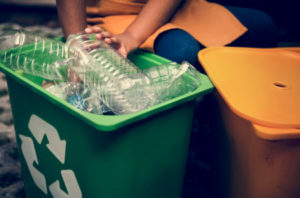 When recycled, HDPE is generally separated by grade since some HDPE plastic is thicker and more durable than others. All the plastic is rigorously cleaned to remove any particles or debris, so only the HDPE materials can be homogenized and processed. By removing any foreign debris and cleaning the plastic, HDPE is safe to continue with its recycling. Any particles left in will essentially ruin the end products.
When recycled, HDPE is generally separated by grade since some HDPE plastic is thicker and more durable than others. All the plastic is rigorously cleaned to remove any particles or debris, so only the HDPE materials can be homogenized and processed. By removing any foreign debris and cleaning the plastic, HDPE is safe to continue with its recycling. Any particles left in will essentially ruin the end products.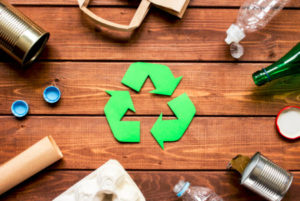 Recycling is a two-way street, and while it’s important to recycle your products, it’s equally as important to utilize products that have already been recycled to keep the green momentum going. There are a variety of materials that can be used to help you complete this process. Considering replacing your current
Recycling is a two-way street, and while it’s important to recycle your products, it’s equally as important to utilize products that have already been recycled to keep the green momentum going. There are a variety of materials that can be used to help you complete this process. Considering replacing your current 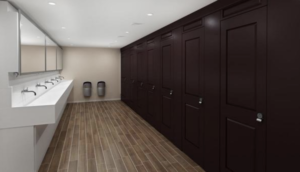
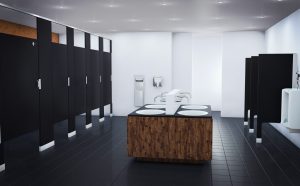
 especially true when it comes to choosing your toilet partitions and stalls. You don’t want to make any mistakes and choose the wrong material that will require a lot of upkeep—or, even worse, an early replacement.
especially true when it comes to choosing your toilet partitions and stalls. You don’t want to make any mistakes and choose the wrong material that will require a lot of upkeep—or, even worse, an early replacement.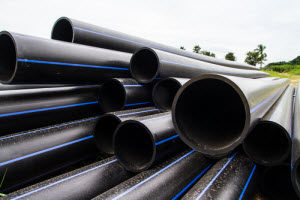 scratches, dents, impacts, and even graffiti. HDPE partitions also offer a reduction in noise, providing a softer sound when being shut.
scratches, dents, impacts, and even graffiti. HDPE partitions also offer a reduction in noise, providing a softer sound when being shut.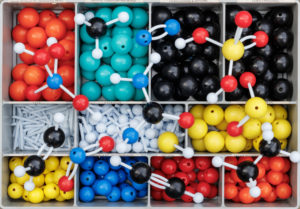 You may not really take the time to consider the variety of materials that can be used as toilet partitions. However, reviewing all of your options can allow you to make the best choice for your facility. Most toilet partitions are made from plastic with an inner core made from kraft paper or cardboard. Materials like Phenolic, Baked Enamel, and Plastic Laminate may look nice in your restroom, but they may be left vulnerable to the moisture and humidity in your restroom. The inner core will absorb the moisture, and over time, it’ll sprout mold, leading to a pungent odor and a substantial problem to solve.
You may not really take the time to consider the variety of materials that can be used as toilet partitions. However, reviewing all of your options can allow you to make the best choice for your facility. Most toilet partitions are made from plastic with an inner core made from kraft paper or cardboard. Materials like Phenolic, Baked Enamel, and Plastic Laminate may look nice in your restroom, but they may be left vulnerable to the moisture and humidity in your restroom. The inner core will absorb the moisture, and over time, it’ll sprout mold, leading to a pungent odor and a substantial problem to solve.


